Tomatoes are widely consumed around the world, and the concentrated paste produced by industrial tomato varieties is the major product. One of the industry’s main problems is to manufacture in a sustainable and efficient chain while meeting cost-cutting and quality-improvement expectations at the same time.
This study focused on three parameters: (1) ascorbic acid content; (2) color; and (3) consistency to demonstrate the loss of quality features of tomato paste during its industrial processing chain. Tomato paste samples (29 °Brix) were heated to 60,70, and 80°C, then chilled and tested for the aforementioned properties using kinetic parameters.
First-order kinetic models accurately predicted the degradation of ascorbic acid (z = 62.8°C, R2 = 0.9499) and instrumental color (z = 19.0°C, R2 = 0.9924 for a*/b* and z = 16.3°C, R2 = 0.9897 for TPS). The thermal treatment temperature had no effect on consistency qualities.
The temperature influence at each processing stage allowed researchers to pinpoint the sterilizing and storage phases as the sources of color and ascorbic acid breakdown, respectively.
To keep color and ascorbic acid, the industry must control sterilization and boost sun protection in the offseason, ensuring lesser losses of sensory quality without diminishing its productive flexibility while always emphasizing food safety.
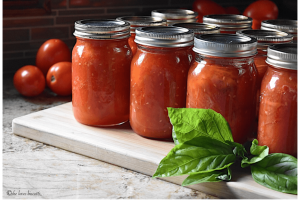
Introduction
Tomatoes are widely consumed around the world, and because they are a perishable fruit with a short growing season, much of the tomato produced for industrial reasons is concentrated pulp, which is reconstituted throughout the year, primarily during the off-season.
The Support Program for the Production and Marketing of Horticultural Products (PROHORT) was implemented in Brazil from 1992 to 2012, and it was discovered that, while only garlic, onions, potatoes, and tomatoes were prioritized by PROHORT, the modernization of production and commercialization of these four vegetables had positive effects on many other vegetable chains (Camargo Filho and Camargo, 2017).
Processing circumstances have an impact on the quality of the processed tomato product (Xu et al., 2018)
Color and consistency are critical quality factors for the classification and marketing of processed tomato products. The presence of carotenoids, of which lycopene accounts for roughly 80%, results in a red-intense and homogenous pulp in both fresh and concentrated tomato products.
The color of tomato products is directly dependent on the control of process parameters that cause carotenoids to oxidize or thermally isomerize. The presence of oxygen must be minimized throughout the concentrated pulp manufacturing chain, making heating the primary cause of color changes (Qiu et al., 2019; Motamedzadegan and Tabarestani, 2011; Shi and Maguer, 2000; Barreiro et al., 1997).
Remini et al. (2015) found that storage temperature and deaeration had the greatest impact on the kinetics of color and ascorbic acid degradation in pasteurized blood orange juice.

Cost and sensory approval are both tied to consistency in tomato products. Differences in cultivar composition, different fruit maturation stages, total solids and insoluble solids content, particle size distribution and shape of insoluble particles, and initial heat processing parameters (hot break or cold break) are the main factors affecting tomato pulp consistency (Page et al., 2019; Xu et al., 2018; Sánchez et al., 2002).
Because of their widespread consumption, both fresh and processed tomatoes are considered essential sources of ascorbic acid (AA). Because AA is relatively thermolabile and one of the most sensitive nutrients to environmental changes, its level is frequently used as a predictor of overall quality changes in processed meals (Tchuenchieu et al., 2018; Koh et al., 2011).
The degradation of concentrated tomato pulp has a direct impact on derived products such as ready sauces, extracts, and ketchup, whose quality is immediately experienced and evaluated by ultimate customers. Other producers opt for the less expensive storage solution under uncontrolled conditions, such as the ambient temperature in open courtyards, based on California, the US state responsible for a major 35 percent of global production.
However, the American product is still exposed to the moderate winter conditions in the southern United States, with average temperatures ranging from 9.1 to 20.2°C (Rssweather, 2019). While the product is exposed to warmer temperature conditions in other tropical countries. As a result, while this storage solution is cost-effective, it can contribute to the deterioration of concentrated pulp over time when exposed to heat and direct sunshine.
When employed in tomato processed products such as sauces and extracts during the off-season, the maximum storage time in the described conditions is sometimes set around 24 months, but it can also be added to the shelf life of the concentrated pulp for an additional 12 to 18 months. In these circumstances, the pulp quality loss is directly felt in the goods that reach the consumer’s table, resulting in significant seasonal variation in the quality parameters of processed tomato products.
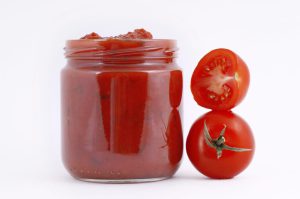
Many authors have demonstrated the applicability of a kinetics-based testing approach to obtain faster insight into food product changes, useful for shelf-life investigations (Peleg et al. 2018), for example for strawberry juice (Buvé et al., 2018), or tomato hot pot sauce (Li et al., 2018), among others.
As a result, this research can assist the industry in identifying the important phases for the degradation of the primary quality attributes of concentrated tomato pulp along the industrial processing chain: color, consistency, and AA content. The kinetics of deterioration must be studied in order to guide the implementation of changes in the processing, manipulation, and storage of concentrated tomato pulp while maintaining food safety and sensory quality.
Concentrated tomato pulp samples from the varieties N-901 (80%), H-9553, H-9992, U-2006, IT-761, and IT-619 were employed in the kinetic experiments (quantity in descending order). The samples were collected at an industrial tomato processing plant, aseptically packed in 4 kg bags, and stored at -15°C until physicochemical analysis.

Materials and methods
physicochemical Analyses
The total soluble solids (oBrix) were determined by direct reading in an Abee Mark II, Reichert Technologies refractometer, and the pH was measured with a Digimed DM-70 pH metre (AOAC, 2010).
Using the HB43-S Mettler Toledo® moisture analyzer, titration was used to estimate titratable acidity (AOAC, 2010), and thermogravimetric with halogen drying was used to calculate wet basis moisture.
Iodometry was used to determine AA (IAL, 2008 – 3664/IV technique). Aliquots of pulp were titrated in triplicate with potassium iodate solution (0.2 mM) to blue colouring after being supplemented with 20% sulfuric acid solution, 10% potassium iodide solution, and 1% starch indicator solution.
Identifying kinetic parameters
The Bigelow model (Singh and Heldman, 2013) was used to determine the kinetic parameters for color and AA degradation, as well as loss of consistency, in 29 °Brix tomato concentrate pulp: decimal reduction time, D (hour), and thermal resistance constant, z (°C). After analyzing the data from the experiment planning, the following kinetic parameters were determined: 60 and 70°C for 12, 24, 46, 48, 60, 72, 84, and 96 minutes; and 80°C for 6, 12, 24, 30, 36, and 48 minutes.
Thermal treatment was performed on the samples, which were placed in 120 mL screw cap polystyrene bottles that were immersed in a thermostatic Lauda® bath and kept closed to minimize temperature variations.
The temperature in the center of the vials was measured with a thermometer, and the heat treatment was interrupted by transferring the vials to a cool thermostatic bath set at 2°C at each set time interval. The samples were preheated in the microwave to speed up heat transfer and reduce come-up Color analysis utilizing equipment
A colorimeter (Hunterlab® model LabScan XE) with a 64 mm quartz cuvette was used for this study (Hunterlab, 2015). According to the equipment instructions, the apparatus was calibrated for reflectance measurement (RSIN), CIELAB color system (L*, a*, and b*), C-type illuminant, and 2° observer angle to get the colorimetric coordinates L*, a*, and b*.
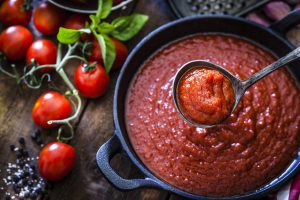
Prior to the measurements, the equipment was calibrated using conventional black and white tiles. Periodically, checks using a red standard tile (L* = 26.18; a* = 27.3 and b* = 12.7) were carried out. time, as proposed by Barreiro et al. (1997).
The cuvette was filled with the same sample volume at each reading, and an opaque black cover was placed over it to prevent ambient light from interfering with the measurement.
Measurements of consistency and shear stress
The samples were chilled after the heat treatment to ensure uniformity and shear stress measurements. Garcia and Barrett (2005) conducted a consistency test at 25°C utilizing a Marconi® Bostwick device MA441, 75 mL, and 0.5 cm scale intervals. Dilution of the tomato pulp samples to 12 percent NTSS (natural tomato soluble solids) or 12 °Brix with deionized water was used to standardize their concentration.
Stable Micro Systems’ Universal Testing Machine, model TA XT Plus, was used to test shear stress by back extrusion. A piston is driven into the sample, the product is expelled around the disc, and the maximum force (gf) is measured in the back-extrusion test.
The measurements were taken directly in the polystyrene pot, which had an inner diameter of 40 mm and a height of 70 mm, where the samples had been pre-conditioned for heat treatment. The 35 mm diameter acrylic disc, code A/BE-d35, was utilized as the geometry (probe) for the back-extrusion test.
Correlating theoretical analysis and real process conditions
Color and AA degradation kinetic parameters were correlated to industrial tomato processing conditions by observing time and temperature parameters from tomato reception to storage in the yard or shelves, up to industrial steps, taking into account how much each stage influenced these characteristics.
Result Analysis
All analyses were carried out in triplicate, with the mean result and its standard deviation taken into account. When appropriate, the findings of the determinations were statistically assessed using ANOVA Variance Analysis and Tukey’s Test for the comparison of means at a significant level.

Results and Discussion
The aseptic pulp employed in the kinetic investigation had a physical-chemical characterization of 67.350.23% wet basis moisture, 29.640.10 °Brix, pH of 4.310.01, 2.110.06% citric acid, and 75.30.9 mg of AA/100 g. Xu et al. (2018) discovered that a high-temperature short time of 21.6 °Brix processed tomato pulp produced similar findings (55.90.05 mg of AA/100 g).
The samples took 5 minutes to reach 60°C, 7.5 minutes to reach 70°C, and 9.5 minutes to reach 80°C in the microwave, which is insignificant when compared to the heat treatments used.
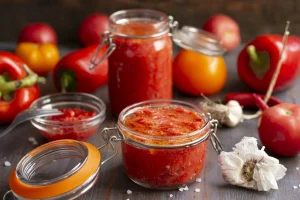
Consistency and shear stress measurements
The Bostwick gadget revealed no significant differences in consistency between measurements taken at 60°C (4.00.1 cm/30s) and 70°C (4.10.1 cm/30s). Only after 6 hours of heating at 80°C did the consistency begin to deteriorate.
There was no statistically significant difference between samples heated for 6 to 48 hours (from 4.3 to 4.5 cm/30 s) and samples heated for 6 to 48 hours (from 4.3 to 4.5 cm/30 s). In this approach, it’s possible to deduce that, in a closed environment with minimal moisture loss, the heat treatment temperature has only a minor impact on the consistency of concentrated tomato pulp.
After 48 hours of heating at 60°C and 36 hours of heating at 70°C, the hardness of the material degraded. The samples obtained after that, up until the completion of the trial, did not show any statistical differences. The shear stress measured by back extrusion exhibited comparable behavior to that of the Bostwick consistency, indicating that temperature had minimal effect.
It is feasible to say that the Bostwick method is adequate for determining tomato pulp consistency. Although not very exact, this simple and low-cost equipment was able to produce results that were equal to those obtained with a more precise and complex back extrusion method.
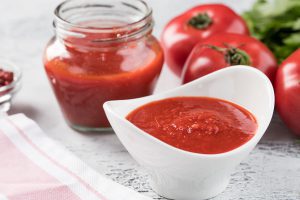
Effect of Processing Methods on the Quality of Tomato Products
Tomatoes are one of the most important specialty crops in the United States, and tomato products are vital in the food business. The standard of excellence
The viscosity, color, flavor, and texture of tomato paste and juice are assessed. nutritional worth For this investigation, four processing methods were chosen: traditional hot break, waring blender with steam, steam injection, and in a twin-screw continuous processor, and high temperature with shear (HTS).
During the hot-break period, the HTS technique uses a high temperature and a shear mixer. tomato processing enhances the extraction process’ efficiency and The resulting tomato products were more consistent, viscous, and high in lycopene.
Lycopene is a powerful antioxidant with anti-cancer effects. This study found that using whole tomatoes in the HTS method created a superior tomato product with greater color, viscosity, and bioactive qualities.
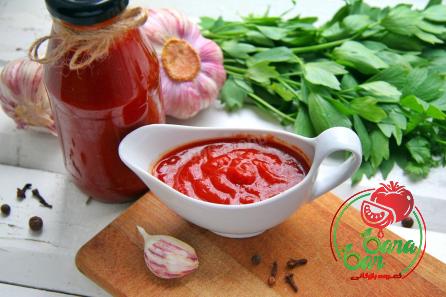

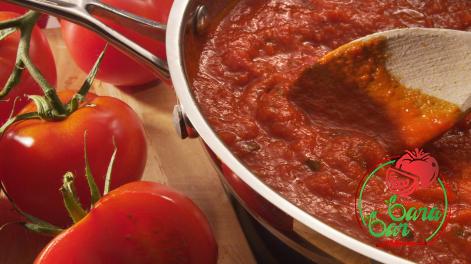
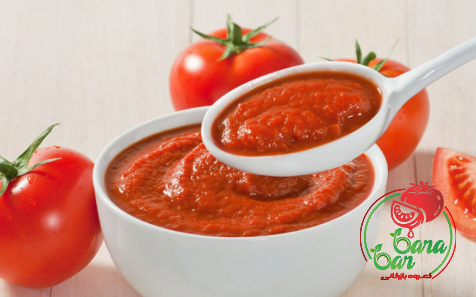
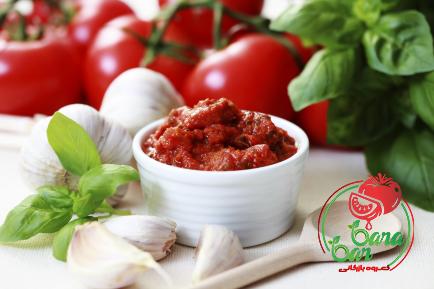


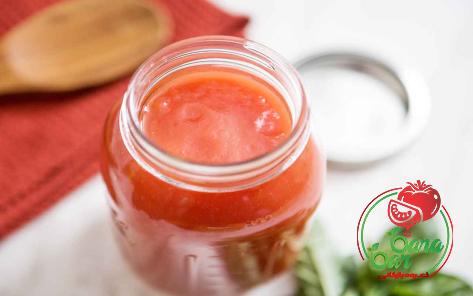

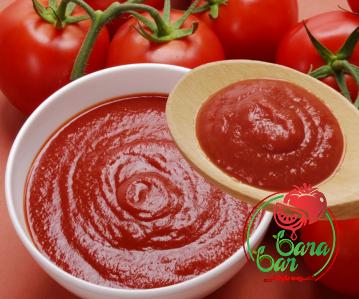
Your comment submitted.